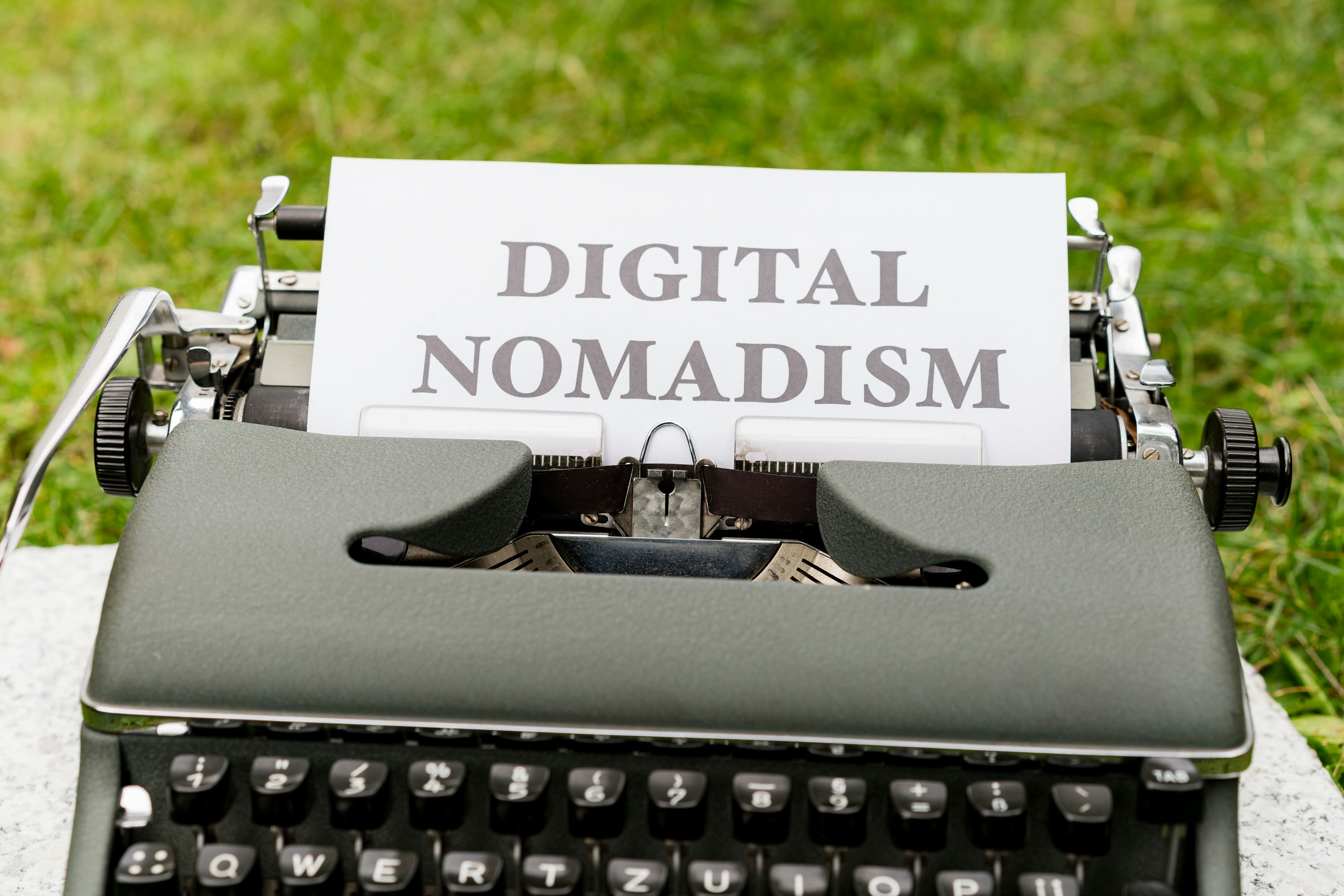Understanding Quiet Luxury
Quiet luxury is an emerging concept that signifies a distinct departure from the bombastic displays of wealth often associated with traditional opulence. Traditional luxury branding typically relies on conspicuous logos, extravagant embellishments, and ostentatious designs that demand attention. In contrast, quiet luxury embodies simplicity, subtlety, and sophistication—characteristics that resonate with a more discerning audience. This shift in perception reflects changing attitudes towards wealth and consumption, where the emphasis is placed on understated elegance rather than loud declarations of affluence.
At the heart of quiet luxury lies a focus on craftsmanship and quality. Products that exemplify this philosophy are often made by skilled artisans who prioritize exquisite materials and meticulous attention to detail over mass production. As a result, these creations tend to possess a timeless quality, designed to last and age beautifully rather than simply catering to transient fashion trends. Consumers are increasingly valuing items that tell a story of careful creation, echoing a broader cultural movement towards sustainability and conscious consumption.
This minimalist approach is also reflected in the aesthetic choices associated with quiet luxury. Color palettes are usually muted, benefiting from the use of neutral tones and earthy hues that exude calm and balance. Patterns are often understated, further emphasizing the beauty of simplicity. In essence, those who embrace quiet luxury seek to convey their status not through overt symbols of wealth, but through their ability to discern and appreciate the finer nuances in quality and design.
As society shifts towards valuing minimalism, quiet luxury surfaces as a contemporary response to the excess of the past. It aligns with a growing awareness of environmental concerns and the benefits of living with less, suggesting that true luxury is about the thoughtful selection of items that enrich one’s life without cluttering it.
The Rise of Minimalism
Minimalism, as a design philosophy and lifestyle choice, has garnered substantial attention over recent decades, evolving significantly from its roots in art and architecture to become a defining characteristic of contemporary living. The historical journey of minimalism can be traced back to the early 20th century, particularly within the contexts of the De Stijl movement and Bauhaus school, which emphasized simplicity, functionality, and the rejection of ornamentation. These principles laid the groundwork for minimalism to emerge not only as an aesthetic choice but also as a broader cultural movement.
As societal changes and economic factors have unfolded, minimalism has adapted, reflecting a collective desire for simplicity in an increasingly complex world. The late 20th and early 21st centuries have seen rapid technological advancements and digitalization, which have contributed to an overabundance of information and consumer goods. In response, many individuals have gravitated towards minimal living, seeking to simplify their environments and lifestyles. This desire for a clutter-free existence is rooted in a longing for clarity and mindfulness amidst the overwhelming noise of modern life.
The economic recession of the late 2000s further catalyzed the rise of minimalism as a lifestyle choice. With a heightened awareness of sustainability and responsible consumption, many began to prioritize quality over quantity, favoring experiences and meaningful possessions rather than material accumulation. The environmental impact of consumerism has prompted a reevaluation of values, resulting in a shift towards sustainable practices and minimal living as a statement of personal responsibility.
In conclusion, the evolution of minimalism is not just an aesthetic trend; it represents a profound cultural shift towards valuing simplicity, sustainability, and mindfulness in our increasingly complex world. This new status symbol reflects a deeper understanding of what it means to live well in contemporary society.
Quiet Luxury in Fashion
The fashion industry has undergone a significant transformation in recent years, with a palpable shift towards quiet luxury. This trend emphasizes understated elegance, favoring timeless designs over ostentatious displays of wealth. Renowned designers and luxury brands have begun prioritizing quality materials and expert craftsmanship, often opting for subtle detailing rather than bold logos and flashy embellishments. This redefined notion of luxury aligns with a growing consumer appetite for sustainability and ethical production practices.
Prominent brands such as The Row, Khaite, and Loro Piana exemplify this commitment to quiet luxury. These labels have cultivated an aesthetic that resonates with the ‘less is more’ philosophy, offering pieces that are versatile and enduring. Rather than chasing seasonal trends, they focus on creating clothing that remains relevant across multiple seasons, promoting a sustainable wardrobe. This approach significantly contributes to the movement away from fast fashion, which typically emphasizes quick turnaround times and disposable styles.
Consumer behavior reflects this shift as well, with more individuals gravitating towards brands that embody sustainable practices and timeless elegance. Shoppers are increasingly educated about the impact of their purchasing decisions, leading them to seek investment pieces that offer both longevity and value. This conscious consumerism fosters a new appreciation for artisan craftsmanship and intrinsic quality. With a growing emphasis on personal style over brand name recognition, individuals are embracing fashion that speaks to their identity rather than serving as a mere status symbol.
In summary, the embrace of quiet luxury within the fashion industry signals a profound change in how consumers perceive style and value. By prioritizing timelessness, elegance, and sustainability, brands are redefining luxury in a way that resonates with modern sensibilities, moving away from the excesses of traditional fashion paradigms.
Minimalism as a Lifestyle Choice
Minimalism has emerged as more than just a design aesthetic; it signifies a profound lifestyle choice that emphasizes simplicity and intentionality in various aspects of daily living. At its core, this philosophy advocates for the reduction of excess, whether it be in physical possessions, commitments, or environmental impact. By opting for a minimalist lifestyle, individuals frequently experience improved mental clarity, reduced stress levels, and greater overall satisfaction.
In terms of mental clarity, many adherents of minimalism report that decluttering their physical spaces significantly enhances their focus and decision-making abilities. This is largely attributed to the reduction of distractions, which engenders an environment conducive to productivity and creativity. The act of simplifying one’s surroundings often leads to a more peaceful mindset, allowing individuals to engage more fully in the present moment.
Moreover, the principles of minimalism inherently promote reduced stress. The constant pursuit of material possessions can lead to feelings of anxiety and discontent. However, adopting a minimalist approach encourages a reevaluation of what is truly necessary and valued, thus alleviating the emotional burden associated with consumerism. Families who prioritize minimalism often find themselves engaging in more meaningful activities together, fostering stronger relationships and greater emotional well-being.
Furthermore, minimalist living is commensurate with environmental awareness. By consuming less and choosing sustainable products, individuals contribute to reducing waste and environmental degradation. This eco-conscious stance has seen a rise in popularity, as many choose to align their lifestyles with values that promote the health of the planet.
Examples of families embracing minimalism abound, from small-space dwellers in urban centers who focus on multifunctional furniture, to those who have taken the plunge to embrace tiny living. These real-life stories illustrate the diverse applications of minimalism as a purposeful lifestyle choice, underscoring its potential to enrich both individual lives and the collective well-being of society.
Quiet Luxury in Interior Design
Quiet luxury in interior design embodies a sophisticated approach that prioritizes simplicity, functionality, and the use of high-quality materials. This design philosophy creates serene and tranquil living spaces that evoke a sense of peace and well-being. As homeowners increasingly seek environments that reflect personal values and lifestyle choices, the principles of quiet luxury serve as guiding criteria for creating spaces that feel both elevated and welcoming.
At the heart of quiet luxury is the concept of minimalism, which encourages the removal of excess and focuses on essential elements. This can be achieved by selecting a limited color palette that promotes a calm atmosphere. Neutral tones, soft pastels, and earthy shades often dominate serene decor, providing a backdrop that is both understated and elegant. Additionally, bold patterns and extravagant accents are minimized in favor of subtlety, allowing the quality of materials to shine through.
Functionality also plays a critical role in the quiet luxury aesthetic. Well-thought-out layouts and multi-functional furniture can contribute to creating a seamless and clutter-free living environment. Built-in storage solutions, for example, help to maintain an organized space, reducing distractions and visual noise. This focus on functionality extends to selecting high-quality furnishings, where enduring craftsmanship and sustainable materials are prioritized, contributing to both the longevity of the pieces and the overall aesthetics of the home.
🛡 Powerful Protection Spells That Shield From Harm
Safeguard yourself, loved ones, and your home from negative energy and spiritual threats with effective, trusted protection spells.
To achieve a quiet luxury aesthetic in one’s own home, it is important to embrace a mindful approach to design. Curate spaces with intention, choosing items that not only serve a purpose but also reflect personal style. Integrating natural elements, such as wood and stone, can enhance the sense of tranquility, further connecting the interior with the environment. Incorporating soft textures through textiles, such as linen or cashmere, can improve comfort and add an inviting warmth to the space, ultimately embodying the essence of quiet luxury. Through these thoughtful choices, a serene, luxurious home can be created that resonates with authenticity and tranquility.
The Connection Between Wealth and Minimalism
In recent years, there has been a notable shift in how wealth is perceived, particularly in relation to the trend of minimalism. This evolving mindset is redefining what it means to be affluent in contemporary society. The new affluent class is increasingly valuing experiences over material possessions, demonstrating that true wealth is not defined solely by the accumulation of goods. Instead, it emphasizes the quality of life and personal fulfillment derived from meaningful engagements and interactions.
Minimalism posits that individuals can find happiness in simplicity rather than in the ostentatious display of wealth. Those who embrace this lifestyle often focus on curating a few high-quality items that resonate with their values and identity, rather than amassing large quantities of objects. This raises intriguing questions regarding conventional markers of status. In an age where social media often glorifies consumerism, minimalism serves as a counter-narrative, emphasizing contentment and mindful consumption.
The affluent individuals gravitating towards minimalism demonstrate a nuanced understanding of wealth as a multifaceted concept. Their choices often reflect a desire for sustainability and introspection, challenging outdated notions that equate wealth with overconsumption. Instead of accumulating endless possessions, minimalists engage in practices that foster well-being, such as travel, education, and philanthropy. This paradigm shift highlights that quality experiences and emotional richness play a critical role in how one navigates and expresses their wealth.
Ultimately, the connection between wealth and minimalism fosters a culture that prioritizes conscious living. This growing trend illustrates a recognition that true affluence can be understated, characterized by a discerning taste for simplicity and a commitment to deeper connections. As more individuals embrace this perspective, what was once deemed opulent is being transformed into a more refined, understated approach to affluence that values substance over superficiality.
The Role of Technology in Minimalism
In recent years, technology has played a pivotal role in redefining minimalism, transforming it into a pathway for modern living. As society progresses into the digital age, individuals are faced with an excess of choices and distractions. Yet, technology also offers innovative solutions that align seamlessly with minimalist values. Smart home devices, such as automated lighting and thermostat systems, enable individuals to control their environments efficiently, reducing unnecessary clutter and promoting simplicity. Furthermore, these advancements not only enhance comfort but also allow for the optimization of energy consumption, aligning with a sustainable lifestyle.
Decluttering apps, such as decluttr and Letgo, have gained popularity by providing platforms that facilitate the selling or donation of unwanted items. They serve as beneficial tools for those seeking to embrace minimalism, promoting intentional decision-making regarding possessions. These applications help users identify items that no longer serve them and offer quick pathways to remove these articles from their lives. In this way, technology becomes an enabler of a streamlined living space and promotes the core principle of minimalism: valuing quality over quantity.
Moreover, the rise of cloud storage solutions, such as Google Drive and Dropbox, enables individuals to minimize physical paperwork and maximize digital organization. By storing documents online, one can reduce their physical footprint while still maintaining access to important information. This transition supports a minimalist lifestyle by eliminating the need for bulky filing cabinets and excessive paperwork, thus contributing to visual and mental clarity.
However, it is crucial to recognize the potential pitfalls of technology in the realm of minimalism. The abundance of devices and applications can sometimes lead to more distractions, potentially causing stress rather than alleviating it. Understanding how to use technology mindfully is essential to ensure it remains a facilitator of a minimalist philosophy rather than a contributor to excess.
Challenges of Embracing Quiet Luxury
Adopting a minimalist lifestyle, which embodies the essence of quiet luxury, often comes with a set of challenges. One significant hurdle is the societal pressure to conform to traditional expressions of wealth. In contemporary culture, visible status symbols—such as extravagant clothing, luxurious cars, and elaborate home decor—remain pervasive indicators of success. Such social conditioning can create a daunting barrier for individuals seeking to adopt a more subdued approach in their lives. The desire to belong and be accepted by societal norms can lead one to hesitate in fully embracing minimalism and quiet luxury.
Another obstacle is the emotional attachment many individuals develop towards their belongings. Years of accumulation often result in an emotional investment in material possessions, making it difficult to part with items that no longer serve a purpose. This attachment can create feelings of guilt or anxiety when contemplating decluttering, which is a fundamental principle of minimalism. Overcoming these emotions requires introspection and a reevaluation of one’s relationship with material possessions. Letting go can be a liberating experience, yet it poses a significant challenge on the path toward a minimalist lifestyle.
Furthermore, the marketing strategies surrounding luxury items often contradict the principles of minimalism. High-end brands typically emphasize exclusivity and opulence, creating a narrative that promotes excess as a status symbol. This can be confusing for those trying to navigate the waters of quiet luxury, as the allure of luxurious branding may overshadow the core values of minimalism. The contrast between marketing messages and personal values necessitates a critical examination of consumer habits, leading individuals to question the authenticity of their desires and ultimately pushing back against conventional norms. Adopting minimalism, while rewarding, requires overcoming these multifaceted challenges and redefining one’s understanding of luxury in a more sustainable and introspective manner.
The Future of Quiet Luxury
The concept of quiet luxury is poised for significant evolution in the coming years, largely influenced by a collective societal shift towards sustainability, ethical consumerism, and mindful living. As global awareness around environmental issues escalates, consumers are increasingly seeking products and brands that not only embody quality but also showcase a commitment to sustainable practices. This transition signals a departure from ostentatious displays of wealth commonly associated with traditional luxury, toward a more understated yet profound representation of status that respects both people and the planet.
In this context, true luxury may well lie in the thoughtful curation of one’s possessions. Minimalism, with its emphasis on simplicity, will resonate strongly with those who appreciate the depth of craftsmanship and the narrative behind each item rather than succumbing to a mentality of excess. As consumers become more discerning, they will likely gravitate towards brands that prioritize ethical sourcing, transparent manufacturing processes, and timeless design principles, fostering a deeper emotional connection to their purchases.
Moreover, as technology advances, we anticipate an increase in ‘smart luxury’—where quality merges seamlessly with innovation. Companies may utilize technology to enhance consumer experiences, while still adhering to the minimalistic foundation of quiet luxury. This future landscape is likely to attract a new generation of consumers who reflect a variety of values, including inclusivity and diversity, within their definitions of luxury and status. Consequently, the lines separating luxury from everyday essentials will blur, leading society to recalibrate what it means to embody luxury.
In conclusion, the future trajectory of quiet luxury and minimalism suggests a profound shift towards sustainable, ethical, and mindful practices. As these values become more integrated into consumer lifestyles, luxury will evolve to redefine status in ways that reflect a conscientious commitment to the world we inhabit.









